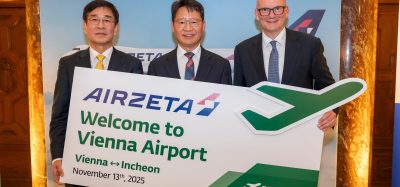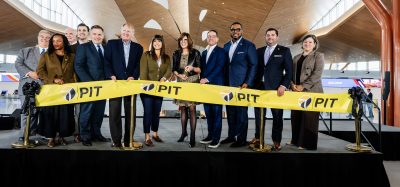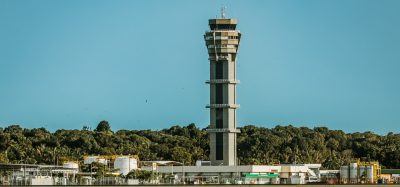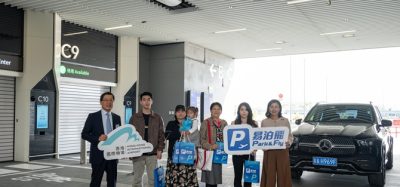Finding balance: The importance of strategy in sustainability strategy and operations at Salzburg Airport
Posted: 16 August 2024 | International Airport Review | No comments yet
At V4+ Airport Association’s WIND summit held in Lake Bohinj, Slovenia , Claudia Typelt, Head of Environment at Salzburg Airport, was a panellist in the sustainability section of the conference. Later, International Airport Review’s Emily Budgen spoke to Claudia to gain greater insight into her career at Salzburg, sustainability and balancing different strategies in planning and operations.
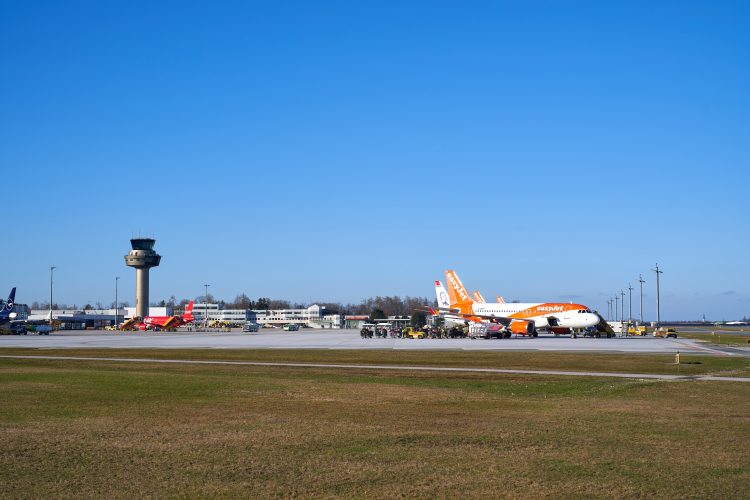

How did you get into the airport industry?
I got into the airport industry because of an announcement in the newspaper. At the time I worked for a tour operator in Greece, I saw this newspaper advertisement just three days before I came back to Austria and said “well, that’s my next job.” I applied and two weeks later I started work at the airport.
Salzburg is a relatively small airport, and, on the panel, you talked about your specialised winter operations. Could you elaborate on what that involves?
Join our free webinar: Revolutionising India’s travel experience through the Digi Yatra biometric programme.
Air travel is booming, and airports worldwide need to move passengers faster and more efficiently. Join the Digi Yatra Foundation and IDEMIA to discover how this groundbreaking initiative has already enabled over 60 million seamless domestic journeys using biometric identity management.
Date: 16 Dec | Time: 09:00 GMT
rEGISTER NOW TO SECURE YOUR SPOT
Can’t attend live? No worries – register to receive the recording post-event.
Of course, Salzburg Airport has landings, take-offs and many passengers throughout the year. Like Geneva, the peak season for Austria’s largest provincial airport is in winter, when many thousands of people from Great Britain, Scandinavia, the Netherlands and many German airports come to Salzburg’s recreational areas. Our airport acts as ‘the gateway to the Alps’!
You mentioned earlier on the panel that you are part of quite a small team, but that you do have to liaise with colleagues in operations and infrastructure departments. Do you think that collaboration across different departments and backgrounds is useful?
Yes, it’s very useful. I have been working in the airport industry for 31 years now, we are a small international airport in Salzburg and the biggest advantage is that we know each other. We must collaborate frequently. For instance, when I need information, I get it quickly and in the format I request. However, it’s a balanced relationship: if colleagues need information from me, I can also give it to them. We have simple and short ways for the passengers, but also quick methods to get information between departments, so we’re able to collaborate across departments a lot.
Nevertheless, I normally need all the data at the end of February, which is in fact our high season. Those on the team know what is needed to report all the information for our external environmental audits. Also, to complete our annual review, we must communicate to work out when such information can be shared – it’s high season for them too! I think this is in our DNA though, we’re like a family, we know each other, and we help each other.
What do you think is going to be a game-changing innovation over the next decade?
The future will have to focus on alternative fuels and propulsion systems for vehicles on the ground and aeroplanes in the air. This applies both to research into fuels and engine technology for aviation and to the creation of an infrastructure on the ground for the fuels of the future. Our aim is that we do not make any carbon compensation, we never did that. So, instead we always use the money (necessary funds) to do new things at the airport to save or reduce the CO2 count, aligning with our goal of CO2 neutrality by 2040.
The future will have to focus on alternative fuels and propulsion systems for vehicles on the ground and aeroplanes in the air”
A whole 10 years before target?
Yes, that is our stated goal. There are many small things we are working on, but there are also major projects, such as a PV system that we commissioned in January. This will supply us with one gigawatt of electricity throughout the year. We have our local energy supplier who has been verified that they are CO2 neutral, because most of the energy they produce is generated by hydropower stations. So, our focus is to get CO2 neutral on heating and cooling, but also on the airport special vehicles and cars where we still partly use fossil fuel and natural gas. These topics are on our to-do list, and to be honest, with our new terminal project this will also help us with new technology.
We always take small steps, because there can be a good overview, and we can introduce new inventions when they are on the market. Taking the time and doing the research is important.
You said that you are ahead of the curve with electric vehicles on the apron. Do you think that passengers are equating sustainability with an improved passenger experience?
Julie [Reeves, from SITA, fellow panellist] said that people still print out their tickets which produces a lot of CO2. However, not everyone has a smartphone, so QR codes or digital ticketing won’t work for everyone. I think that this might be the way for the future, which must begin to be implemented now. We see it in our airport, new technology must be invented; it has to be given to passengers in trial. However, the solution needs to involve everyone.
In your summarising statement, you mentioned the three P’s, people, planet and profits, and how these were three pillars that support all operations and planning. Do you think, looking back, that the weighting of these pillars is different to when you first started in the industry? Or, has one become more important in recent years?
Thirty years ago, the world was focused on other issues other than environment, sustainability or social responsibility, the weighting of the issues that concerned the world were different. Today, the focus has shifted to the three Ps, and neither governments nor corporations can ignore the signs of the times. We revised our strategy about four to five years ago and have now found a good basis for making the airport fit for the future with ‘people, planet, profit’ – this was shortly after the outbreak of the coronavirus pandemic.
We can’t always divide our efforts into three equal parts, there must be priorities. Among the top topics we deal with in our strategy, we focus on employees. After the pandemic, we first had to learn to work together as a team again. Almost two years ago, there were so many question marks for us: we didn’t know whether the winter season as we knew it would start again or whether there would be less air traffic, the planning of all operational processes, including the additional staff required, was suddenly a gamble. So, people from all departments were asked to help in the operational department on Saturdays during the winter season. It was great! We were able to work together in the operational areas each weekend!
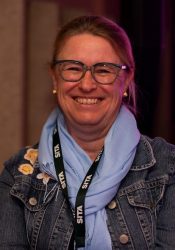

Credit: Katja Jemec/V4+ Airports Association
About the interviewee
Claudia Typelt is the Head of Environment Salzburg Airport – W. A. Mozart. Upon completion of her Matura Exam in 1989, Claudia worked in the banking sector for four years before being a summer rep for a tour operating company. She then started working at Salzburg Airport where, since 2018 she has held the position of Head of Environment.
More Like This
Tallinn Airport’s new generation security screening equipment makes the passenger journey more convenient
Oman Airports: Aerohacking a way to a more innovative future
Q and A with Houston Airports’ Molly Waits
Join our free webinar: Revolutionising India’s travel experience through the Digi Yatra biometric programme.
Air travel is booming, and airports worldwide need to move passengers faster and more efficiently. Join the Digi Yatra Foundation and IDEMIA to discover how this groundbreaking initiative has already enabled over 60 million seamless domestic journeys using biometric identity management.
Date: 16 Dec | Time: 09:00 GMT
rEGISTER NOW TO SECURE YOUR SPOT
Can’t attend live? No worries – register to receive the recording post-event.
Related topics
Green energy, Social responsibility, Sustainability, Sustainable Aviation Fuel (SAF), Sustainable development, Terminal operations, Winter operations



